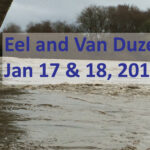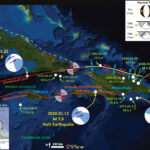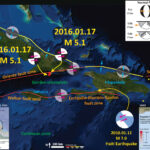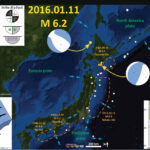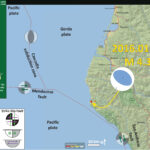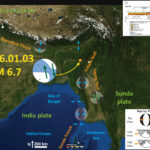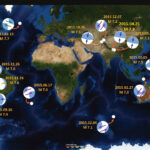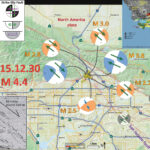Yesterday and today were flood events on the Van Duzen and Eel Rivers. I will post more later as I am preparing for the beginning of the Spring Term which begins tomorrow. First I post the USGS hydrographs from NOAA…
Earthquake Report: Cuba, Jamaica, Hispaniola, Puerto Rico (1900-2016)!
Following yesterdays earthquakes in Cuba, I put together an earthquake summary poster for this region for the period from 1900 through Jan 17, 2016. Here is the USGS query that I used to get the data. Here is my Earthquake…
Earthquake Report: Cuba!
We just had three earthquakes on the southern boundary of Cuba. Here are the USGS websites for these earthquakes: 2016.01.17 M 4.6 2016.01.17 M 5.1 2016.01.17 M 5.1 These do not have USGS moment tensors, but I suspect that they…
Earthquake Report: Hokkaido!
Today we had an earthquake offshore of Hokkaido. This earthquake occurred near the 2003 Tokachi_oki earthquake, a M 8.3 earthquake that is responsible for one of the only direct observations of a seismogenic turbidity current. Here is my interpretive map.…
Earthquake Report: Cape Mendocino!
We just had a pair of earthquakes near the town of Petrolia (first oil well in CA drilled here, ergo the name). The first one I did not feel, but I did feel the quick jolt of the second one.…
Earthquake Report: India!
Today we had a good sized earthquake in eastern India, within the India-Burmese wedge (IBW). The IBW is a part of the convergent plate boundary between the India plate to the west and the Burma (part of Eurasia) plate to…
Earthquake Report: 2015 Summary M GT 7
Here I summarize the global seismicity for 2015. I limit this summary to earthquakes with magnitude greater than or equal to M 7.0. I reported on all but one of these earthquakes. Here are all the annual summaries: 2015 Earthquake…
Earthquake Report: San Bernardino (Devore)!
A couple days ago, I was on the road and did not yet have my laptop. Therefore I am reporting about this earthquake a few days afterwards… There has been a swarm of seismic activity in the San Bernardino area.…
Earthquake Report: Mendocino fault and Gorda plate!
We just had an earthquake along strike with the Mendocino fault zone. This region is seismically active and there were a number of MF earthquakes in 2015. Here is the USGS web page for today’s M = 4.5 MF earthquake.…
